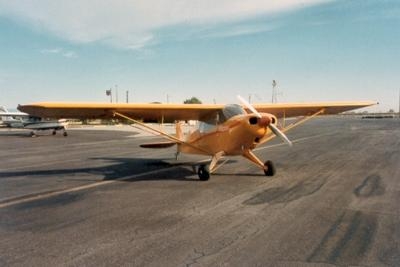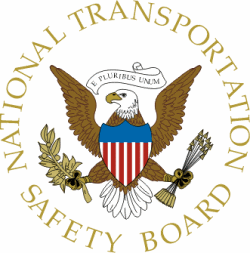Wed, Jul 09, 2014
Airplane Went Down July 2 Near Anchorage, AK Fatally Injuring The Pilot
The NTSB has determined that the elevator cables on a Piper PA-12 that went down July 2 shortly after takeoff from Merrill Field Airport, Anchorage, AK were incorrectly installed, according to a preliminary report.

The report indicates that the accident occurred about 0820 Alaska Daylight Time. The accident resulted in the fatal injury of the pilot and substantial damage to the airplane.
According to acquaintances of the pilot, the airplane had been undergoing extensive maintenance for about 5 years. Neither the airplane's co-owner nor others at the airport were aware of it having been flown before the accident flight. A pilot who was standing on the ramp on the south side of runway 25 saw the airplane climb after takeoff. He said that, once the airplane became airborne, its climb kept getting steeper and steeper and did not level off like he expected it would. He said that the airplane "wasn't pitching quickly or violently but slowly" and "as if the pilot had no ability to stop it." The climb appeared so abnormal to the witness that he yelled to get the attention of another pilot on the ramp. He said that the engine sounded strong during the climb. He said that the airplane then pitched down, and he heard the engine power reduce as if the pilot had pulled it to idle, and the airplane descended vertically to the ground.
A second witness who was also on the south side of runway 25 described that the "airplane's angle of attack was so steep" that he knew "something was not right." He said that the airplane climbed straight up then "pivoted" to a nose-down position and descended straight to the ground. The witness said that he heard the engine go quiet about the time that the airplane pivoted, but he was not sure if the engine noise changed before or after the airplane transitioned to the nose-down attitude. The two witnesses and several other people from both sides of the runway ran to the accident site to try to help. Two witnesses who were east of runway 25 reported hearing engine noises that sounded like back-firing.
The airplane was righted and towed from the accident site for an examination. At the request of and in the presence of the NTSB investigator-in-charge (IIC), an airframe and powerplant mechanic assisted with the examination of the airplane.

The engine and the damaged front control stick were removed to allow for movement of the flight controls. The postaccident examination revealed that manipulating the ailerons resulted in correct directional movement of the rear control stick. Manipulating the rudder resulted in correct directional cable movement to each rudder pedal.
The elevator control cables were attached to each end of the elevator control horn. Elevator control cable continuity was established from the control horn to the rear control stick. Manipulating the rear control stick aft (to command airplane nose-up) resulted in cable movement corresponding with a downward deflection of the elevator (which would result in airplane-nose-down flight). The airframe and powerplant mechanic assisting with the examination confirmed that the elevator control cables were misrigged, such that they were attached to the incorrect (opposite) locations on the elevator control horn, resulting in a reversal of elevator control inputs.
(Photo from file. Not accident airplane)
More News
Aero Linx: Aviators Code Initiative (ACI) Innovative tools advancing aviation safety and offering a vision of excellence for aviators. The ACI materials are for use by aviation pra>[...]
Make Sure You NEVER Miss A New Story From Aero-News Network Do you ever feel like you never see posts from a certain person or page on Facebook or Instagram? Here’s how you c>[...]
From 2016 (YouTube Edition): Who You Gonna Call When You Have a Rocket Engine that Needs a Spacecraft? While at EAA AirVenture 2016, ANN CEO and Editor-In-Chief, Jim Campbell, sat >[...]
"In my opinion, if this isn't an excessive fine, I don't know what is... The odds are good that we're gonna be seeking review in the United States Supreme Court. So we gotta muster>[...]
Expedite Used by ATC when prompt compliance is required to avoid the development of an imminent situation. Expedite climb/descent normally indicates to a pilot that the approximate>[...]
 ANN's Daily Aero-Linx (04.30.25)
ANN's Daily Aero-Linx (04.30.25) ANN FAQ: Turn On Post Notifications
ANN FAQ: Turn On Post Notifications Classic Aero-TV: Agile Aeros Jeff Greason--Disruptive Aerospace Innovations
Classic Aero-TV: Agile Aeros Jeff Greason--Disruptive Aerospace Innovations Aero-News: Quote of the Day (04.30.25)
Aero-News: Quote of the Day (04.30.25) ANN's Daily Aero-Term (04.30.25): Expedite
ANN's Daily Aero-Term (04.30.25): Expedite




